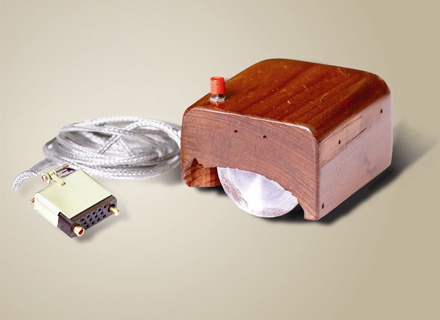Archive for the ‘How To’ Category
Innovation Through Preparation
 Innovation is about new; innovation is about different; innovation is about “never been done before”; and innovation is about preparation.
Innovation is about new; innovation is about different; innovation is about “never been done before”; and innovation is about preparation.
Though preparation seems to contradict the free-thinking nature of innovation, it doesn’t. In fact, where brainstorming diverts attention, the right innovation preparation focuses it; where brainstorming seeks more ideas, preparation seeks fewer and more creative ones; where brainstorming does not constrain, effective innovation preparation does exactly that.
Ideas are the sexy part of innovation; commercialization is the profitable part; and preparation is the most important part. Before developing creative, novel ideas, there must be a customer of those ideas, someone that, once created, will run with them. The tell-tale sign of the true customer is they have a problem if the innovation (commercialization) doesn’t happen. Usually, their problem is they won’t make their growth goals or won’t get their bonus without the innovation work. From a preparation standpoint, the first step is to define the customer of the yet-to-be created disruptive concepts.
The most effective way I know to create novel concepts is the IBE (Innovation Burst Event), where a small team gets together for a day to solve some focused design challenges and create novel design concepts. But before that can happen, the innovation preparation work must happen. This work is done in the Focus phase. The questions and discussion below defines the preparation work for a successful IBE.
1. Why is it so important to do this innovation work?
What defines the need for the innovation work? The answer tells the IBE team why they’re in the room and why their work is important. Usually, the “why” is a growth goal at the business unit level or projects in the strategic plan that are missing the necessary sizzle. If you can’t come up with a slide or two with growth goals or new projects, the need for innovation is only emotional. If you have the slides, these will be used to kick off the IBE.
2. Who is the customer of the novel concepts?
Who will choose which concepts will be converted into working prototypes? Who will convert the prototypes into new products? Who will launch the new products? Who has the authority to allocate the necessary resources? These questions define the customers of the new concepts. Once defined, the customers become part of the IBE team. The customers kick off the IBE and explain why the innovation work is important and what they’ll do with the concepts once created. The customers must attend the IBE report-out and decide which concepts they’ll convert to working prototypes and patents.
Now, so the IBE will generate the right concepts, the more detailed preparation work can begin. This work is led by marketing. Here are the questions to scope and guide the IBE.
3. How will the innovative new product be used?
How will the innovative product be used in new way? This question is best answered with a hand sketch of the customer using the new product in a new way, but a short written description (30 words, or so) will do in a pinch. The answer gives the IBE team a good understanding, from a customer perspective, what new things the product must do.
What are the new elements of the design that enable the new functionality or performance? The answer focuses the IBE on the new design elements needed to make real the new product function in the new way.
What are the valuable customer outcomes (VCOs) enabled by the innovative new product? The answer grounds the IBE team in the fundamental reason why the customer will buy the new product. Again, this is answered from the customer perspective.
4. How will the new innovative new product be marketed and sold?
What is the tag line for the new product? The answer defines, at the highest level, what the new product is all about. This shapes the mindset of the IBE team and points them in the right direction.
What is the major benefit of the new product? The answer to this question defines what your marketing says in their marketing/sales literature. When the IBE team knows this, you can be sure the new concepts support the marketing language.
5. By whom will the innovative new product be used?
In which geography does the end user live? There’s a big difference between developed markets and developing markets. The answer to the question sets the context for the new concepts, specifically around infrastructure constraints.
What is their ability to pay? Pocketbooks are different across the globe, and the customer’s ability to pay guides the IBE team toward concepts that fit the right pocket book.
What is the literacy level of the end customer? If the customer can read, the IBE team creates concepts that take advantage of that ability. If the customer cannot read, the IBE team creates concepts that are far different.
6. How will the innovative new product change the competitive landscape?
Who will be angry when the new product hits the market? The answer defines the competition. It gives broad context for the IBE team and builds emotional energy around displacing adversaries.
Why will they be angry? With the answer to this one, the IBE team has good perspective on the flavor of pain and displeasure created by the concepts. Again, it shapes the perspective of the IBE team. And, it educates the marketing/sales work needed to address competitors’ countermeasures.
Who will benefit when the new product hits the market? This defines new partners and supporters that can be part of the new solutions or participants in a new business model or sales process.
What will customer throw away, reuse, or recycle? This question defines the level of disruption. If the new products cause your existing customers to throw away the products of your existing customers, it’s a pure market share play. The level of disruption is low and the level of disruption of the concepts should also be low. On the other end of the spectrum, if the new products are sold to new customers who won’t throw anything away, you creating a whole new market, which is the ultimate disruption, and the concepts must be highly disruptive. Either way, the IBE team’s perspective is aligned with the level appropriate level of disruption, and so are the new concepts.
Answering all these questions before the creative works seems like a lot of front-loaded preparation work, and it is. But, it’s also the most important thing you can do to make sure the concept work, technology work, patent work, and commercialization work gives your customers what they need and delivers on your company’s growth objectives.
Image credit — ccdoh1.
To improve innovation, improve clarity.
 If I was CEO of a company that wanted to do innovation, the one thing I’d strive for is clarity.
If I was CEO of a company that wanted to do innovation, the one thing I’d strive for is clarity.
For clarity on the innovative new product, here’s what the CEO needs.
Valuable Customer Outcomes – how the new product will be used. This is done with a one page, hand sketched document that shows the user using the new product in the new way. The tool of choice is a fat black permanent marker on an 81/2 x 11 sheet of paper in landscape orientation. The fat marker prohibits all but essential details and promotes clarity. The new features/functions/finish are sketched with a fat red marker. If it’s red, it’s new; and if you can’t sketch it, you don’t have it. That’s clarity.
The new value proposition – how the product will be sold. The marketing leader creates a one page sales sheet. If it can’t be sold with one page, there’s nothing worth selling. And if it can’t be drawn, there’s nothing there.
Customer classification – who will buy and use the new product. Using a two column table on a single page, these are their attributes to define: Where the customer calls home; their ability to pay; minimum performance threshold; infrastructure gaps; literacy/capability; sustainability concerns; regulatory concerns; culture/tastes.
Market classification – how will it fit in the market. Using a four column table on a single page, define: At Whose Expense (AWE) your success will come; why they’ll be angry; what the customer will throw way, recycle or replace; market classification – market share, grow the market, disrupt a market, create a new market.
For clarity on the creative work, here’s what the CEO needs: For each novel concept generated by the Innovation Burst Event (IBE), a single PowerPoint slide with a picture of its thinking prototype and a word description (limited to 12 words).
For clarity on the problems to be solved the CEO needs a one page, image-based definition of the problem, where the problem is shown to occur between only two elements, where the problem’s spacial location is defined, along with when the problem occurs.
For clarity on the viability of the new technology, the CEO needs to see performance data for the functional prototypes, with each performance parameter expressed as a bar graph on a single page along with a hyperlink to the robustness surrogate (test rig), test protocol, and images of the tested hardware.
For clarity on commercialization, the CEO should see the project in three phases – a front, a middle, and end. The front is defined by a one page project timeline, one page sales sheet, and one page sales goals. The middle is defined by performance data (bar graphs) for the alpha units which are hyperlinked to test protocols and tested hardware. For the end it’s the same as the middle, except for beta units, and includes process capability data and capacity readiness.
It’s not easy to put things on one page, but when it’s done well clarity skyrockets. And with improved clarity the right concepts are created, the right problems are solved, the right data is generated, and the right new product is launched.
And when clarity extends all the way to the CEO, resources are aligned, organizational confusion dissipates, and all elements of innovation work happen more smoothly.
Image credit – Kristina Alexanderson
How It Goes With Innovation
 Innovation starts with recognition of a big, meaningful problem. It can come from the strategic planning process; from an ongoing technology project that isn’t going well; an ongoing product development project that’s stuck in the trenches; or a competitor’s unforeseen action. But where it comes from isn’t the point. What matters is it’s recognized by someone important enough to allocate resources to make the problem go away. (If it’s recognized by someone who can’t muster the resources, it creates frustration, not progress.)
Innovation starts with recognition of a big, meaningful problem. It can come from the strategic planning process; from an ongoing technology project that isn’t going well; an ongoing product development project that’s stuck in the trenches; or a competitor’s unforeseen action. But where it comes from isn’t the point. What matters is it’s recognized by someone important enough to allocate resources to make the problem go away. (If it’s recognized by someone who can’t muster the resources, it creates frustration, not progress.)
Once recognized, the importance of the problem is communicated to the organization. Usually, a problem is important because it blocks growth, e.g., a missing element of the new business model, technology that falls short of the distinctive value proposition (DVP), or products that can’t deliver on your promises. But whether something’s in the way or missing, the problem’s importance is best linked to a growth objective.
Company leaders then communicate to the organization, using one page. Here’s an example:
WHY – we have a problem. The company’s stock price cannot grow without meeting the growth goals, and currently we cannot meet them. Here’s what’s needed.
WHAT – grow sales by 30%.
WHERE – in emerging markets.
WHEN – in two years.
HOW – develop a new line of products for the developing world.
Along with recognition of importance, there must be recognition that old ways won’t cut it and new thinking is required. That way the company knows it’s okay to try new things.
Company leaders pull together a small group and charters them to spend a bit of time to develop concepts for the new product line and come back and report their go-forward reccommendations. But before any of the work is done, resources are set aside to work on the best ones, otherwise no one will work on them and everyone will know the company is not serious about innovation.
To create new concepts, the small group plans an Innovation Burst Event (IBE). On one page they define the DVP for the new product line, which describes how the new customers will use the new products in new ways. They use the one page DVP to select the right team for the IBE and to define fertile design space to investigate. To force new thinking, the planning group creates creative constraints and design challenges to guide divergence toward new design space.
The off-site location is selected; the good food is ordered; the IBE is scheduled; and the team is invited. The company leader who recognized the problem kicks off the IBE with a short description of the problem and its importance, and tells the team she can’t wait to hear their recoomendations at the report-out at the end of the day.
With too little time, the IBE team steps through the design challenges, creates new concepts, and builds thinking prototypes. The prototypes are the center of attention at the report-out.
At the report-out, company leaders allocate IP resources to file patents on the best concepts and commission a team of marketers, technologists, and IP staff to learn if viable technologies are possible, if they’re patentable, and if the DVP is viable.(Will it work, can we patent it, and will they buy it.)
The marketer-technologist-IP team builds prototypes and tests them in the market. The prototypes are barely functional, if at all, and their job is to learn if the DVP resonates. (Think minimum viable prototype.) It’s all about build-test-learn, and the learning loops are fast and furious at the expese of statistical significance. (Judgement carries the day in this phase.)
With viable technology, patentable ideas, and DVP in hand, the tri-lobed team reports out to company leaders who sanctioned their work. And, like with the IBE, the leaders allocate more IP resources to file more patents and commission the commercialization team.
The commercialization team is the tried-and-true group that launches products. Design engineering makes it reliable; manufacturing makes it repeatable; marketing makes it irresistible; sales makes it successful. At the design reviews more patents are filed and at manufacturing readiness reviews it’s all about process capability and throughput.
Because the work is driven by problems that limit growth, the result of the innovation work is exactly what’s needed to fuel growth – in this case a successful product line for the developing world. Start with the right problem and end up with the right solution. (Always a good idea.)
With innovation programs, all the talk is about tools and methods, but the two things that really make the difference are lightning fast learning loops and resources to do the innovation work. And there’s an important philosophical chasm to cross – because patents are usually left out of the innovation equation – like an afterthought chasing a quota – innovation should become the umbrella over patents and technology. But because IP reports into finance and technology into engineering, it will be a tough chasm to bridge.
It’s clear fast learning loops are important for fast learning, but they’re also important for building culture. At the end of a cycle, the teams report back to leadership, and each report-out is an opportunity to shape the innovation culture. Praise the good stuff and ignore the rest, and the innovation culture moves toward the praise.
There’s a natural progression of the work. Start – do one project; spread – use the learning to do the next ones; systematize – embed the new behaviors into existing business processes; sustain – praise the best performers and promote them.
When innovation starts with business objectives, the objectives are met; when innovation starts with company leadership, resources are allocated and the work gets done; and when the work shapes the culture, the work accelerates. Anything less isn’t innovation.
Image credit – Jaybird
Don’t boost innovation, burst it.
 The most difficult part of innovation is starting, and the best way to start is the Innovation Burst Event, or IBE. The IBE is a short, focused event with three objectives: to learn innovation methods, to provide hands-on experience, and to generate actual results. In short, the IBE is a great way to get started.
The most difficult part of innovation is starting, and the best way to start is the Innovation Burst Event, or IBE. The IBE is a short, focused event with three objectives: to learn innovation methods, to provide hands-on experience, and to generate actual results. In short, the IBE is a great way to get started.
There are a couple flavors of IBEs, but the most common is a single day even where a small, diverse group gets together to investigate some bounded design space and to create novel concepts. At the start, a respected company leader explains to the working group the importance of the day’s work, how it fits with company objectives, and sets expectations there will be a report out at the end of the day to review the results. During the event, the working group is given several design challenges, and using innovation tools/methods, creates new concepts and builds “thinking prototypes.” The IBE ends with a report out to company leaders, where the working group identifies patentable concepts and concepts worthy of follow-on work. Company leaders listen to the group’s recommendations and shape the go-forward actions.
The key to success is preparation. To prepare, interesting design space is identified using multiple inputs: company growth objectives, new market development, the state of the technology, competitive landscape and important projects that could benefit from new technology. And once the design space is identified, the right working group is selected. It’s best to keep the group small yet diverse, with several important business functions represented. In order to change the thinking, the IBE is held at location different than where the day-to-day work is done – at an off-site location. And good food is provided to help the working group feel the IBE is a bit special.
The most difficult and most important part of preparation is choosing the right design space. Since the selection process starts with your business objectives, the design space will be in line with company priorities, but it requires dialing in. The first step is to define the operational mechanism for the growth objective. Do you want a new product or process? A new market or business model? The next step is to choose if you want to radically improve what you have (discontinuous improvement) or obsolete your best work (disruption). Next, the current state is defined (knowing the starting point is more important than the destination) – Is the technology mature? What is the completion up to? What is the economy like in the region of interest? Then, with all that information, several important lines of evolution are chosen. From there, design challenges are created to exercise the design space. Now it’s time for the IBE.
The foundation of the IBE is the build-to-think approach and its building blocks are the design challenges. The working group is given a short presentation on an innovation tool, and then they immediately use the tool on a design challenge. The group is given a short description of the design challenge (which is specifically constructed to force the group from familiar thinking), and the group is given an unreasonably short time, maybe 15-20 minutes, to create solutions and build thinking prototypes. (The severe time limit is one of the methods to generate bursts of creativity.) The thinking prototype can be a story board, or a crude representation constructed with materials on hand – e.g., masking tape, paper, cardboard. The group then describes the idea behind the prototype and the problem it solves. A mobile phone is used to capture the thinking and the video is used at the report out session. The process is repeated one or two times, based on time constraints and nature of the design challenges.
About an hour before the report out, the working group organizes and rationalizes the new concepts and ranks them against impact and effort. They then recommend one or two concepts worthy of follow on work and pull together high level thoughts on next steps. And, they choose one or two concept that may be patentable. The selected concepts, the group’s recommendations, and their high level plans are presented at the report out.
At the report out, company leaders listen to the working group’s thoughts and give feedback. Their response to the group’s work is crucial. With right speech, the report out is an effective mechanism for leaders to create a healthy innovation culture. When new behaviors and new thinking are praised, the culture of innovation moves toward the praise. In that way, the desired culture can be built IBE by IBE and new behaviors become everyday behaviors.
Innovation is a lot more than Innovation Burst Events, but they’re certainly a central element. After the report out, the IBE’s output (novel concepts) must be funneled into follow on projects which must be planned, staffed, and executed. And then, as the new concepts converge on commercialization, and the intellectual comes on line, the focus of the work migrates to the factory and the sales force.
The IBE is designed to break through the three most common innovation blockers – no time to do innovation; lack of knowledge of how do innovation (though that one’s often unsaid); and pie-in-the-sky, brainstorming innovation is a waste of time. To address the time issue, the IBE is short – just one day. To address the knowledge gap, the training is part of the event. And to address the pie-in-the-sky – at the end of the day there is tangible output, and that output is directly in line with the company’s growth objectives.
It’s emotionally challenging to do work that destroys your business model and obsoletes your best products, but that’s how it is with innovation. But for motivation, think about this – if your business model is going away, it’s best if you make it go away, rather than your competition. But your competition does end up changing the game and taking your business, I know how they’ll do it – with Innovation Burst Events.
Image credit – Pascal Bovet
Starting starts with starting.
 If you haven’t done it before and you want to start, you have only one option – to start.
If you haven’t done it before and you want to start, you have only one option – to start.
Much as there’s a huge difference between lightning and lightning bug, there’s a world of difference between starting and talking about starting. Where talking about starting flutters aimlessly flower to flower, starting jolts trees from the ground; fries all the appliances in your house; and leaves a smoldering crater in its wake. And where it’s easy to pick a lightning bug out of the grass and hold it in your hand, it’s far more difficult to grab lightning and wrestle it into submission.
Words to live by: When in mid conversation you realize you’re talking about starting – Stop talking and start starting. Some examples:
Instead of talking about starting a community of peers, send a meeting request to people you respect. Keep the group small for now, but set the agenda, hold the meeting, and set up the next one. You’re off and running. You started.
Replace your talk of growing a culture of trust with actions to demonstrate trust. Take active responsibility for the group’s new work that did not go as planned (aka – failure) so they feel safe to do more new work. Words don’t grow trust, only actions do.
Displace your words of building a culture of innovation with deeds that demonstrate caring. When someone does a nice job or goes out of their way to help, send words of praise in an email their boss – and copy them, of course. Down the road, when you want help with innovation you’ll get it because you cared enough to recognize good work. Ten emails equal twenty benefactors for your future innovation effort. Swap your talk of creating alignment with a meeting to thank the group for their special effort. But keep the meeting to two agenda items – 1. Thank you. 2. Pizza.
When it comes to starting, start small. When you can’t start because you don’t have permission, reduce size/scope until you do, and start. When you’re afraid to start, create a safe-to-fail experiment, and start. When no one asks you to start, that’s the most important time – build the minimum viable prototype you always wanted to build. Don’t ask – build. And if you’re afraid to start even the smallest thing because you think you may get fired – start anyway. Any company that fires you for taking initiative will be out of business soon enough. You might as well start.
Talk is cheap and actions are priceless. And if you never start a two year project you’re always two years away. Start starting.
Image credit – Vail Marston
Celebrating 5 Years of Writing
I have written a blog post every Wednesday evening for the last five years. No guest blogs, no ghost writer, no repeat blogs, and no editor. Just me.
The main theme last year was around doing new. Though I used the word innovation too many times, I provided real examples and grounded observations on what to do and why. There are many tools, processes, and philosophies around innovation – too many to cover fully even over a year or two of blogs – but there are two things that apply to all of us.
Innovation is context specific. Whatever you do going forward is strongly shaped by what you did to make the present what it is. And because every company’s history is different, every company’s go-forward activities will be different. Yes, become knowledgeable about best practices, but use only the ones that fit and don’t use them as-is – twist them to match the curves of your company. Yes, understand what other companies have done, but don’t copy them.
Innovation is all about people. If you can get people to try new things, you’re well on your way. And to get them to try new things, figure out why they’re afraid and do the small things, the everyday things, that make is safe to try.
My goal for year six – another year of meaningful writing.
Thanks for reading.
Mike
Image credit – woodleywonderworks.
Customer Value – the Crowned Jewel of Innovation
Innovation results in things that are novel, useful, and successful. These things can be products, services, data, information, or business models, but regardless of the flavor, they’re all different from what’s been done before.
And when things are different, they’re new; and that means we don’t know how to do them. We don’t know how to start; don’t know how to measure; don’t know how they’ll be received; don’t know if they’ll be successful.
In the commercial domain, successful means customers buy your products and pay for your services. When customers value your new stuff more than they value their money, they pay; and when they pay it’s success. But first things first – before there can be success, before there can be innovation, there must be customer value. With innovation, customer value is front and center.
How do you come up with ideas that may have customer value? There’s a goldmine of ideas out there, with some veins better than others, and any dowsing you can use to pan the high grade ore is time well spent. There are two tools of choice: one that channels the voice of the customer and a second that channels the voice of the technology.
Your technology has evolved over time and has developed a trajectory which you can track. (Innovation On Demand, Fey and Riven.) But at the highest level, as a stand-in for technology, it’s best to track the trajectory of your products – how they’ve improved over time. You can evaluate how your products improved over multiple lines of evolution, and each line will help you to channel the future from a different perspective.
The voice of your customers is the second divining rod of choice. What they say about you, your company, and your products can help you glean what could be. But this isn’t the same as VOC. This is direct, unfiltered, continuous real time capture of self-signified micro stories. This is VOC without the soothsaying, this is direct connection with the customer. (Sensemaker.)
There are two nuggets to pan for: limiting cant’s and purposeful misuse. You seek out groups of customer stories where customers complain about things your product cannot do and how those cant’s limit them. These limiting cant’s are ripe for innovation since your customers already want them. Purposeful misuse is when the radical fringe of your customer base purposely uses your product in a way that’s different than you hoped. These customers have already looked into the future for you.
Do these ideas have customer value? The next step is to evaluate the value of your diamonds in the rough. The main point here is only customers can tell you if you’ve hit the mother lode. But, since your ideas are different than anything they’ve experienced, in order assay the ideas you’ve got to show them. You’ve got to make minimum viable prototypes and let them use their loop to judge the potential cut, color, clarity, and carat. As a prospector, it’s best to evaluate multiple raw gemstones in parallel, and whatever customers say, even if you disagree, the learning is better than gold.
How can we deliver on the customer value? With your innovations in the rough – ideas you know have customer value – it’s time to figure out what it will take to convert your pyrite prototypes into 24 carat products. There are missing elements to be identified and fundamental constraints to be overcome and backplane of the transmutation is problem definition. Done right, the technology development work is a series of well-defined problems with clear definitions of success. From the cleaving, blocking and cutting of technology development the work moves to the polishing of product development and commercialization.
Innovation can’t be fully defined with a three question framework. But, as long as customer value is the crowned jewel of your innovation work, most everything else will fall into place.
Prototypes Are The Best Way To Innovate
 If you’re serious about innovation, you must learn, as second nature, to convert your ideas into prototypes.
If you’re serious about innovation, you must learn, as second nature, to convert your ideas into prototypes.
Funny thing about ideas is they’re never fully formed – they morph and twist as you talk about them, and as long as you keep talking they keep changing. Evolution of your ideas is good, but in the conversation domain they never get defined well enough (down to the nuts-and-bolts level) for others (and you) to know what you’re really talking about. Converting your ideas into prototypes puts an end to all the nonsense.
Job 1 of the prototype is to help you flesh out your idea – to help you understand what it’s all about. Using whatever you have on hand, create a physical embodiment of your idea. The idea is to build until you can’t, to build until you identify a question you can’t answer. Then, with learning objective in hand, go figure out what you need to know, and then resume building. If you get to a place where your prototype fully captures the essence of your idea, it’s time to move to Job 2. To be clear, the prototype’s job is to communicate the idea – it’s symbolic of your idea – and it’s definitely not a fully functional prototype.
Job 2 of the prototype is to help others understand your idea. There’s a simple constraint in this phase – you cannot use words – you cannot speak – to describe your prototype. It must speak for itself. You can respond to questions, but that’s it. So with your rough and tumble prototype in hand, set up a meeting and simply plop the prototype in front of your critics (coworkers) and watch and listen. With your hand over your mouth, watch for how they interact with the prototype and listen to their questions. They won’t interact with it the way you expect, so learn from that. And, write down their questions and answer them if you can. Their questions help you see your idea from different perspectives, to see it more completely. And for the questions you cannot answer, they the next set of learning objectives. Go away, learn and modify your prototype accordingly (or build a different one altogether). Repeat the learning loop until the group has a common understanding of the idea and a list of questions that only a customer can answer.
Job 3 is to help customers understand your idea. At this stage it’s best if the prototype is at least partially functional, but it’s okay if it “represents” the idea in clear way. The requirement is prototype is complete enough for the customer can form an opinion. Job 3 is a lot like Job 2, except replace coworker with customer. Same constraint – no verbal explanation of the prototype, but you can certainly answer their direction questions (usually best answered with a clarifying question of your own such as “Why do you ask?”) Capture how they interact with the prototype and their questions (video is the best here). Take the data back to headquarters, and decide if you want to build 100 more prototypes to get a broader set of opinions; build 1000 more and do a small regional launch; or scrap it.
Building a prototype is the fastest, most effective way to communicate an idea. And it’s the best way to learn. The act of building forces you to make dozens of small decisions to questions you didn’t know you had to answer and the physical nature the prototype gives a three dimensional expression of the idea. There may be disagreement on the value of the idea the prototype stands for, but there will be no ambiguity about the idea.
If you’re not building prototypes early and often, you’re not doing innovation. It’s that simple.
Ratcheting Toward Problems of a Lesser Degree
Here’s how innovation goes:
(Words uttered. // Internal thoughts.)
That won’t work. Yes, this is a novel idea, but it won’t work. You’re a heretic. Don’t bring that up again. // Wow, that scares me, and I can’t go there.
Yes, the first experiment seemed to work, but the test protocol was wrong, and the results don’t mean much. And, by the way, you’re nuts. // Wow. I didn’t believe that thing would ever get off the ground.
Yes, you modified the test protocol as I suggested, but that was only one test and there are lots of far more stressful protocols that surely cannot be overcome. // Wow. They listened to me and changed the protocol as I suggested, and it actually worked!
Yes, the prototype seemed to do okay on the new battery of tests, but there’s no market for that thing. // I thought they were kidding when they said they’d run all the tests I suggested, but they really took my input seriously. And, I can’t believe it, but it worked. This thing may have legs.
Yes, the end users liked the prototypes, but the sample size was small and some of them don’t buy any of our exiting products. I think we should make these two changes and take it to more end users. // This could be exciting, and I want to be part of this.
Yes, they liked the prototypes better once my changes were incorporated, but the cost is too high. // Sweet! They liked my design! I hope we can reduce the cost.
I made some design changes that reduce the cost and my design is viable from a cost standpoint, but manufacturing has other priorities and can’t work on it. // I’m glad I was able to reduce the cost, and I sure hope we can free up manufacting resources to launch my product.
Wow, it was difficult to get manufacturing to knuckle down, but I did it, and my product will make a big difference for the company. // Thanks for securing resources for me, and I’m glad you did the early concept work when I was too afraid.
Yes, my product has been a huge commercial success, and it all strarted with this crazy idea I had. You remember, right? // Thank you for not giving up on me. I know it was your idea. I know I was a stick-in-the-mud. I was scared. And thanks for kindly and effectively teaching me how to change my thinking. Maybe we can do it again sometime.
________________
There’s nothing wrong with this process; in fact, everything is right about it because that’s what people do. We’ve taught them to avoid risk at all costs, and even still, they manage to walk gingerly toward new thinking.
I think it’s important to learn to see the small shifts in attitude as progress, to see the downgrade from an impossible problem to a really big problem as progress.
Instead of grabbing the throat of radical innovation and disrupting yourself, I suggest a waterfall approach of a stepwise ratchet toward problems of a lesser degree. This way you can claim small victories right from the start, and help make it safe to try new things. And from there, you can stack them one on top of another to build your great pyramid of disruption.
And don’t forget to praise the sorceres and heretics who bravely advance their business model-busting ideas without the safety net of approval.
How to Make Big Data Far More Powerful
 Big Data is powerful – measure what people do on the web, summarize the patterns, and use the information for good. These data sets are so powerful because they’re bigger than big; there’s little bias since the data collection is automatic; and the analysis is automated. There’s huge potential in the knowledge of what people click, what pages they land on, and what place the jump from.
Big Data is powerful – measure what people do on the web, summarize the patterns, and use the information for good. These data sets are so powerful because they’re bigger than big; there’s little bias since the data collection is automatic; and the analysis is automated. There’s huge potential in the knowledge of what people click, what pages they land on, and what place the jump from.
It’s magical to think about what can be accomplished with the landing pages and click-through rates for any demographic you choose. Here are some examples:
- This is the type of content our demographic of value (DOV) lands on, and if we create more content like this we’ll get more from them to land where we want.
- These are the pages our DOV jump from, and if we advertise there more of our DOV will see our products.
- This is the geographic location of our DOV when they land on our website, and if we build out our sales capacity in these locations we’ll sell more.
- This is the time slot when our DOV is most active on their smart phones, and if we tweet more during that time we’ll reach more of them.
But just as there’s immense power knowing the actions of your DOV (what they click on), there are huge assumptions on what it all means. Here are two big ones:
- All clicks are created equal.
- When more see our content, more will do what we want.
Here is an example of three members (A, B, C) of your demographic of interest who take the same measurable action but with different meaning behind it:
Member A, after four drinks, speeds home recklessly; loses control of the car; crashes into your house; and parks the car in your living room.
Member B, after grocery shopping, drives home at the speed limit; the front wheel falls off due to a mechanical problem; loses control of the car; crashes into your house; and parks the car in your living room.
Member C, after volunteering at a well-respected non-profit agency, drives home in a torrential rain 15 miles per hour below the speed limit; a child on a bicycle bolts into the lane without warning and C swerves to miss the child; loses control of the car; crashes into your house; and parks the car in your living room.
All three did the same thing – crashed into your house – but the intent, the why, is different. Same click, but not equal. And when you put your content in front of them, regardless of what you want them to do, A, B, and C will respond differently. Same DOV, but different intentions behind their actions.
Big Data, with its focus on the whats, is powerful, but can be made stereoscopic with the addition of a second lens that can see the whys. Problem is, the whys aren’t captured in a clean, binary way – not transactional but conversational – and are subject to interpretation biases where the integers of the whats are not.
With people, action is preceded by intent, and intent is set by thoughts, feelings, history, and context. And the best way to understand all that is through their stories. If you collect and analyze customer stories you’ll better understand their predispositions and can better hypothesize and test how they’ll respond.
In the Big Data sense, Nirvana for stories is a huge sample size collected quickly with little effort, analysis without biases, and direct access to the stories themselves.
New data streams are needed to collect the whys in a low overhead way, and new methods are needed to analyze them quickly and without biases. And a new perspective is needed to see not only the amazing power of Big Data (the whats), but the immense potential of seeing the what’s with one eye and the whys with the other.
Keep counting the whats with traditional Big Data work – there’s real value there. But also keep one eye on the horizon for new ways to collect and analyze the whys (customer stories) in a Big Data way.
Collection and analysis of customer stories, if the sample size is big enough and biases small enough, is the best way I know to look through the fog and understand emerging customer needs and emerging markets.
If you can figure out how to do it, it will definitely be worth the effort.
Innovation’s Mantra – Sell New Products To New Customers
 There are three types of innovation: innovation that creates jobs, innovation that’s job neutral, and innovation that reduces jobs.
There are three types of innovation: innovation that creates jobs, innovation that’s job neutral, and innovation that reduces jobs.
Innovation that reduces jobs is by far the most common. This innovation improves the efficiency of things that already exist – the mantra: do the same, but with less. No increase in sales, just fewer people employed.
Innovation that’s job neutral is less common. This innovation improves what you sell today so the customer will buy the new one instead of the old one. It’s a trade – instead of buying the old one they buy the new one. No increase in sales, same number of people employed.
Innovation that creates jobs is uncommon. This innovation radically changes what you sell today and moves it from expensive and complicated to affordable and accessible. Sell more, employ more.
Clay Christensen calls it Disruptive Innovation; Vijay Govindarajan calls it Reverse Innovation; and I call it Less-With-Far-Less.
The idea is the product that is sold to a relatively small customer base (due to its cost) is transformed into something new with far broader applicability (due to its hyper-low cost). Clay says to “look down” to see the new technologies that do less but have a super low cost structure which reduces the barrier to entry. And because more people can afford it, more people buy it. And these aren’t the folks that buy your existing products. They’re new customers.
Vijay says growth over the next decades will come from the developing world who today cannot afford the developed world’s product. But, when the price comes down (down by a factor of 10 then down by a factor of 100), you sell many more. And these folks, too, are new customers.
I say the design and marketing communities must get over their unnatural fascination with “more” thinking. To sell to new customers the best strategy is increase the number of people who can afford your product. And the best way to do that is to radically reduce the cost signature at the expense of features and function. If you can give ground a bit on the thing that makes your product successful, there is huge opportunity to reduce cost – think 80% less cost and 20% less function. Again, you sell new product to new customers.
Here’s a thought experiment to help put you in the right mental context: Create a plan to form a new business unit that cannot sell to your existing customers, must sell a product that does less (20%) and costs far less (80%), and must sell it in the developing world. Now, create a list of small projects to test new technologies with radically lower cost structures, likely from other industries. The constraint on the projects – you must be able to squeeze them into your existing workload and get them done with your existing budget and people. It doesn’t matter how long the projects take, but the investment must be below the radar.
The funny thing is, if you actually run a couple small projects (or even just one) to identify those new technologies, for short money you’ve started your journey to selling new products to new customers.



 Mike Shipulski
Mike Shipulski